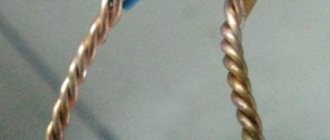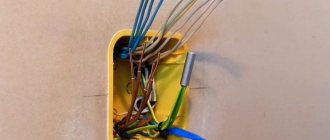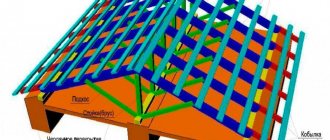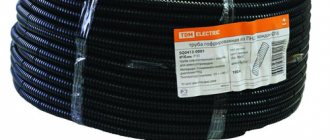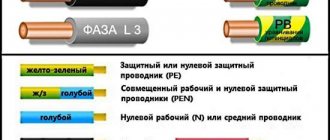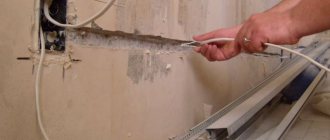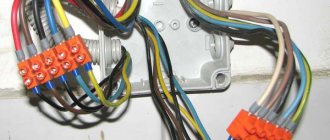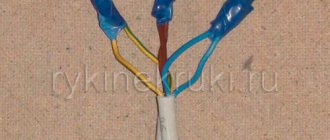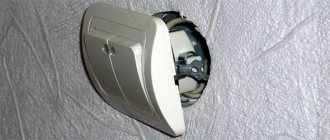Electrician in the house
Encyclopedia about electricity from A to Z
Masters catalog
Find the best master or company in your city
Making connections with a conductor using such devices is not only convenient, but also safe.
Today it is difficult to imagine the work of an electrician without the use of mounting accessories, namely various terminal blocks. With the development of technology, new requirements are being established for the safety and parameters of electrical networks in premises for various purposes, new requirements are being issued and standards are being established that have already prohibited the use of twists, which were indispensable some 20-30 years ago.
As you might have guessed, today we will talk about modern terminal blocks for wires - we will tell you why it is remarkable, considering long-known and innovative models.
- Types of individual terminals Scabbard terminals
- Ring terminals
- Pin terminals
- Coupling terminals
- Legrand – terminal blocks that conquered the world
Basic wire connection options
There are different ways to connect the cable. This is welding, mechanical twisting or the use of terminal blocks. How to properly connect the wires to each other depends on certain requirements that ensure the safety and reliability of the system.
Connection option using terminals
Twist
This method is used in the absence of special tools and additional devices. The wires are twisted and wrapped with electrical tape. This option is reliable, but you need to follow some rules. Copper twists only with copper, and aluminum with aluminum. It is forbidden to twist copper and aluminum products, as this causes an electrolysis process and destroys the components. The twisting option depends on the material, diameter and purpose of the connection.
The modern version of twisting is performed without pliers, but with the help of special polymer caps, inside of which there is a metal spiral.
To make the connection, the ends of the wires must first be stripped to a distance of 15 mm, and then inserted into the cap. Then the body is turned all the way.
Pros of twisting:
- simple technology;
- available materials.
Minuses:
- Do not connect aluminum and copper wires;
- not very high quality connection.
This option is suitable for temporary wiring.
Twisting wires
Important! Twisting is not used in rooms with high humidity or in buildings made of wood.
Soldering
Soldering is also often used. Moreover, this option is as durable as welding, but there is no need to take out a welding machine. A regular soldering iron will also work. The wiring is fixed using fused solder.
To perform soldering, first remove the insulating layer from the wires and then clean the surface with sandpaper. The contacts need to be joined, and then solder from the soldering iron is applied to the twist. The solder should get inside the twist and connect the wires to each other. After cooling, the wires should be insulated.
Connection options
Welding
Now let's find out how to connect the wires by welding. To do this, the wires are first twisted and then their ends are welded. This results in a reliable and stable connection. The disadvantages of this method include the fact that the connection is permanent. And if you need to change something, you will have to completely remove the fused area.
In addition, this method requires a welding unit and special electrodes. Once cooled, the welded area is insulated using heat shrink tubing or electrical tape.
Welding method
Crimping
To do crimping you will need a copper or aluminum sleeve. It is selected based on the diameter of the twist. The stripped wires need to be twisted and then a tube-sleeve is put on them. It is clamped with special pliers. This option is quite complicated, so it is used by professional electricians.
Wire crimping
Terminals for connecting wires
There are different connectors for electrical wires, and one simple option is terminal blocks.
The terminal block consists of a plastic housing with a soldered plate or metal socket. A bare conductor is installed between the plates or in the socket, clamped with a screw. After tightening the screw, you should ensure that the structure is secure. To do this, it is recommended to pull the conductor.
It is worth considering that the connection points are not insulated, so terminal blocks can only be used in rooms with normal humidity levels.
The advantages of this method:
- speed and ease of use;
- low cost;
- no special skills required;
- Cables with different diameters can be connected.
One of the disadvantages is that the connections in the terminal boxes must be periodically tightened.
The use of terminal clamps allows you to avoid contact of different materials in the wires. Therefore, in this way it is possible to connect aluminum and copper wires to each other. Terminal blocks come in spring, screw and knife types.
Various terminal options are used for a strong connection
Twist
This is the most common type of connection that can be made without special tools and even with your fingers (not recommended). Since conventional twisting is characterized by a rather unreliable connection, soldering or welding of an already twisted connector is additionally used.
Pros of twists:
- Cheap connection. For twisting, two wires and insulating material (insulating tape or cambric) are enough.
- Large contact area. The larger the area of conductors in contact, the greater the power (current load) they are able to conduct. The twists can be made of any size, so the contact area will always be sufficient.
- Does not require maintenance.
- Single-wire and multi-wire conductors can be connected.
Disadvantages of twists:
- Low moisture resistance. It is not recommended to use in damp rooms, as well as in wooden cottages.
- Additional insulation required. Unlike various terminal connections, twisting requires additional insulation.
- Aluminum and copper cannot be combined.
- High duration of the technological process. Soldering and welding contacts takes a lot of time.
- Additional equipment required. To weld contacts, you will need a welding machine with a low current. For example, the inexpensive Wert SWI model with argon-arc welding mode is suitable for high-quality welded strands.
Twisting without soldering or welding is usually used when installing temporary buildings, which will then have to be removed.
Main types of terminals
Terminal blocks can be of different types, which differ in price, design and quality. When choosing products, you need to know the value of the current that will flow through the wires. It must be less than the rated current.
Screw (construction, barrier)
Screw terminals are the most popular option due to their simplicity and superior reliability. These terminal blocks are suitable for connecting sockets and for laying electrical wiring.
In this case, the wires are connected using screw-type clamps. This allows for a strong hold. Do not use screw terminals for aluminum wires.
Screw connectors
Clamping (spring, self-clamping): wire clamps
These products are also called wire crimp terminals. The cables are clamped in them using a spring. No special tool is required. The stripped wire is installed all the way into the block and secured with a spring. Modern models have a self-clamping function.
Spring terminals are popular due to their reliable connection. To remove the core, you need to pull the lever back. When choosing this option, the terminal block must be selected taking into account the number of connections. Spring products are made from different polymer materials. The contact element is made of two brass plates.
Clamping products
Terminals for distribution boxes
To connect the wires in the junction box, a terminal made of a plastic case with holes for conductors, a spring element and a current-carrying bus is used. To connect, the conductor must be inserted all the way into the terminal. In this case, the spring element firmly presses the conductor.
Terminals inside the box
Fused terminals
Fuse terminals are used for selective protection of secondary circuits. Both flexible and rigid conductors are used.
Terminal blocks
A terminal block is a device for switching various circuits with terminals connected in pairs. The products contain large diameter sockets. The pads have threadless and threaded outlets. Metal screws are used to tighten the wires. The types of pads are different, but the principle of their design is the same.
To quickly connect wires, Vago blocks are often used. They come in two types:
- with flat spring mechanism;
- universal with lever mechanism.
Compact terminal blocks
Knife terminal blocks
Such options are used for grounding and grounding circuits. They are also used for cutting branches into the conductor. Blade joints are often used for audio equipment. Their peculiarity is that during installation, stripping of the conductor is not required. The wire is simply installed into the terminal block and crimped.
The advantage of such terminals is the saving of installation time, reliability and safe connection due to a special lever. In addition, no special tools are required for installation.
Knife models
General installation requirements
The quality of connections and branches during installation is of paramount importance. When troubleshooting an electrical circuit, most often the problem occurs due to a lack of contact. Poor contact can lead not only to a circuit break, but also to overheating of the wires. This is often the cause of fire.
Therefore, strict requirements are imposed on them.
Regardless of which terminals are used for installation, the following rules must be followed:
- During installation, it is necessary to leave a reserve of wires before all connections (for reconnection).
- All connections must be located in accessible places.
- The location of the connecting elements must be protected from vibration and any other mechanical influences.
- The insulation of the connecting elements must match the insulation of the conductors.
- All connections must be made in junction boxes, cabinets and control panels, and special niches in building structures.
There are many types of terminal blocks available for different purposes:
- plug-in;
- hybrid;
- mini and micro terminals;
- fuse terminals;
- disconnect terminals;
- multi-pin;
- multi-tiered;
- checkpoints and others;
For all varieties, the installation rules are the same.
Which terminals are best to use for connecting wires?
The main purpose of the terminals is to connect the wires correctly. Depending on this, you need to choose products. To make a competent joint you need to select certain types of terminals. Products differ in rated current and wire diameter. All parameters are indicated on the terminal body. Some models may contain special filler inside. This gel prevents oxidation processes and improves the reliability of connections.
You can select a terminal block based on the housing material:
- ceramic terminal block is used in electrical installations with special temperature conditions, for example, in power buses or in heating equipment;
- polypropylene is a durable material with plastic properties. It perfectly withstands various loads and does not deform. Used for household lighting devices;
- polyamide has excellent characteristics. Used for pads that require increased load;
- carbolite is able to withstand static vibration loads;
- polyvinyl chloride is used for blocks that are used for low-current connections. This could be lighting or household appliances;
- Ebonite and textolite are also used for the manufacture of terminal blocks.
Advantages and disadvantages of use
The following provisions are considered the main positive qualities of the terminals:
- Secure connection. The occurrence of a spark is practically eliminated.
- Reliability and durability during operation.
- High level of rigidity, which allows the terminals to be fixed more firmly.
- Ease of installation. This allows you to use the terminals at home and fix them yourself.
- During the installation process, you can get by with a simple screwdriver. No other tool is required.
A significant disadvantage is the size range of the connector. During installation work, it is worth considering the routing of wires and the installation of the distribution box.
Overview of wire terminal manufacturers
Let's look at which manufacturers produce such equipment.
Legrand
For conductors of different materials and diameters, screw terminal blocks from Legrand are used. The material is brass coated with a layer of nickel. This composition allows for good connection and excellent conductive properties. Polypropylene, which is fire resistant, is used as an insulating material.
The terminal blocks of this company have the following characteristics:
- mechanical strength;
- large selection of sizes;
- switching capabilities of both power and low-current circuits;
- various colors;
- comprehensive testing and availability of relevant certificates.
Terminal block from Legrand
Wago
The products of the German company Wago are known for their high quality. Spring screwless terminal blocks provide reliable connection of a variety of conductors.
The reusable terminal has the following advantages:
- ease of installation work;
- vibration resistance;
- no specialized tool required.
Wago terminal blocks are made of copper with special treatment, which protects against corrosion. The conductors are clamped using a flat spring with a chromium-nickel alloy.
Functional terminal block
ABB
ABB offers a wide price range, which depends on the quality of individual elements. The manufacturer offers different types: spring, screw, as well as terminals with connectors and insulation.
The product has the following advantages:
- high quality products;
- innovative technological developments;
- high strength of connections.
Advantages of terminal blocks
Wago terminal blocks have an impressive number of advantages:
- They do not require any maintenance during operation.
- There is a separate terminal clamp for each of the connected wires.
- The connection does not require additional insulation.
- During operation, self-clamping terminal blocks of this type are absolutely safe, since they completely exclude the possibility of a person touching live parts.
- At the point of contact, the connection is gas-tight, which eliminates any possibility of oxidation of the exposed wires.
- To connect wires using such terminal blocks, an electrician does not need to make any additional efforts or have special knowledge and skills. Installation is quick and neat; you don’t even need to use a basic screwdriver. This is a huge advantage in cases where wiring has to be installed in hard-to-reach places and large volumes, or work in poor lighting conditions.
- The Vago connecting clamp has compact dimensions.
- If necessary, the connection can be easily redone.
- Due to the springs, Vago terminal blocks are impact-resistant and highly vibration-resistant.
- They withstand excess humidity, exposure to aggressive environments (for example, fuels and lubricants) and high temperatures (as they are made from materials of the low-flammability category).
- Since the spring terminals are adjusted to a specific core cross-section, the applied clamping force is optimal. This eliminates the possibility of thermal deformation or damage to the wires. Thus, Wago terminals provide a reliable contact connection for the entire period of operation.
- In a distribution box with such connectors, order and aesthetic appearance are always guaranteed.
- And, of course, a plus that all terminal blocks have is the ability to connect wires made of different metals (for example, copper + aluminum).
The only disadvantage is that the connectors must be located in places accessible for inspection and work at any time. But not only Vagov terminals have this drawback; it is inherent in absolutely all detachable connections.
The main steps in the process of connecting wires using terminals
You can find out in detail how the wires are connected using terminals from our table. Let's look at connection options using examples of different Wago models:
| Photo | Process description |
| To connect the wires using the 22÷73 series terminal block. It is necessary to strip the conductors to a length of 10 mm. | |
| We insert the bare parts into the terminal block until it stops. | |
| If necessary, remove the terminal block by turning it in the opposite direction. Both parts must be inside the fixture. This option is used to connect light. | |
| Terminal blocks 222 series Wago are recommended to be used for repair work and temporary connections. | |
| The connection is made using special levers. The wire is also stripped to 10 mm and inserted into the terminal block, then the levers are latched. | |
| The 224 series is used to connect all kinds of chandeliers, lamps and sconces. | |
| Using this terminal, you can connect solid and stranded wires. | |
| The single core is inserted into the hole with lubricant. | |
| The stranded wire is inserted into another hole. | |
| A special cap is used for PPE conductors. | |
| The cap is screwed onto the conductors. | |
| To improve the quality of such a connection, the wires need to be stripped to about 6 cm. | |
| Then the PPE cap is screwed on. This results in a very reliable connection. | |
| The connection is insulated using electrical tape. | |
| You can use a household terminal block. The monocore must be cleaned and placed inside the terminal block. Then it is tightened using a special screwdriver. |
Some tips for using Wago
If you are going to use such terminal blocks in lighting networks or in any other networks with a current limit of up to 10 A, then use Wago clamps safely, you don’t need to know any nuances or subtleties here.
When using terminal blocks in a network with a load of 10 to 20 A, the cleanliness of the conductor surface plays an important role. In addition, a circuit breaker must be installed in the circuit (10, 13, 16 or 20 A).
For loads above 25 A, it is better to stop using Wago terminal clamps and use soldering, welding or crimping wires.
You can independently increase the reliability of the connecting clamp, for example Wago 733. If your load reaches the maximum value, then proceed as follows. Strip the cores of the connected wires by 20-30 mm and insert them as expected into the terminal block. Now, turning the clamp clockwise, twist the remaining exposed parts of the wires and insulate them. Rest assured, the reliability of such contact has increased several times.
What to look for when choosing?
If a person plans to carry out repair work in a house or apartment, then it is best to buy self-clamping products; it is better to leave screw ones on the store shelf. In order not to make a mistake in your choice, it is important to correctly calculate the number of wires that are located in each connection, and also take into account the diameter of the cores. Stiffness is also taken into account and often plays an important role. If the user plans to use the element to work with a flexible cable, then it is better to give preference to reusable models, since the clamping occurs there using a special paw. Of course, the cost will be higher, but in return the owner will receive quality.
It should be remembered that disposable models, which are designed for installation in aluminum wires, differ in color, which can be gray or black; there is a special technical lubricant inside the device.
Manufacturers create transparent terminals for copper, so it’s easy to find a suitable option. If a person plans to use a clamp to connect copper and aluminum, then it is worth using reusable devices.
Where can I buy
Before going to a specialized department of an electrical store to purchase the necessary accessories, it is advisable to read the best reviews and recommendations from customers, as well as find out the advice of a professional electrician.
Electrical goods stores offer a wide range of terminal blocks, so you need to choose budget products that are suitable for a specific installation. You can find out which company is better to buy in advance or directly from a consultant who has undergone special electrical training.
In addition, you can order terminals online from an online store of construction or electrical marketplaces. The Yandex.Market aggregator also offers to find out how much the required terminal block costs, read the description, compare functionality, select a store and order online.
Peculiarities
When carrying out a major renovation, a person changes everything in his house, including the wiring.
A new junction box is installed where wiring needs to be done. To do this better, it is best to use terminal blocks. This is an excellent device that will provide tight fixation for the entire period of operation. Today, new types of this product are being produced, which are many times superior to screw ones. To carry out installation and wiring, a person will need a minimum of time. This was largely made possible thanks to self-clamping terminals.
How to distinguish a fake?
The manufacturer Wago has proven itself best in the electrical goods market. To avoid buying a cheap fake, familiarize yourself with the differences between terminal blocks made in Germany and China. First, what you can see immediately in the store during an external inspection of the product:
- The flags (or levers) on the Chinese terminal block are of a darker (or one might even say dirty) orange hue; in German they are brighter and lighter.
- On the end of the original product there is nothing written on the Chinese clip.
- On the reverse side of the terminal block, the German manufacturer places schematic instructions for use and dimensions for stripping wires. In the Chinese copy, the reverse side is blank, nothing is written or drawn there.
- On the German terminal block, two values are indicated on the side - operating voltage and rated throughput current. In Chinese, the voltage is only written 250 V.
If you look at the inside of both copies, at first glance everything seems the same. But if you pull out the contact strip, you will see that the Chinese manufacturer has it twice as thin as the German one. The original terminal block does not have a magnetic contact strip, but the Chinese one is attracted to the magnet.
Find out more about fakes here:
We tried to convey basic information on Wago self-clamping terminal blocks to you. There are plenty of places in the home electrical network to use them. Therefore, if you just can’t give up the old old-fashioned twisting method, we advise you to think about more advanced technologies. After all, it’s so simple, fast and, most importantly, inexpensive.
